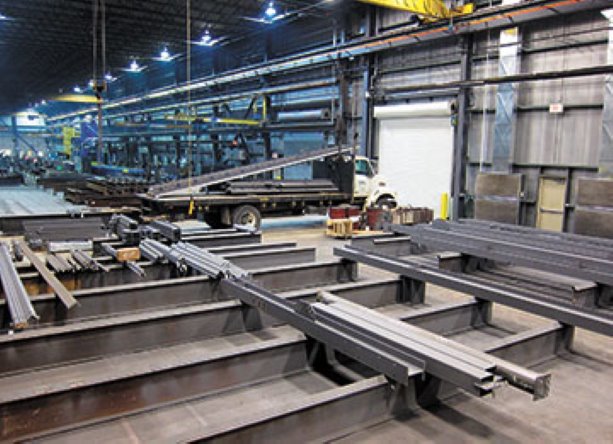The steel fabrication industry is going through unprecedented times, with technological leaps changing operation methods in short order.
A walk through the product exhibit aisles at last November’s Fabtech 2012 — North America’s largest metal fabricating show — is proof of how fast that pace is, cites Zoran Radonich, president of Pittsburgh Steel Group based in Mississauga.
“You don’t recognize the equipment from shows held only a couple of years ago. Now it’s all lasers, robots, computers.”
Radonich calls the speed of change “almost unreal.”
Chris Adach, vice-president and part owner of the M & G Steel Ltd., agrees. CNC equipment, robotic systems and 3D computer modeling complete the operations of progressive fabricators these days.
Adach says economics and human resources play a major role in changes coming forth.
Recent innovations target production boosts and, in many instances, those innovations replace workers — an important factor as skilled labor in the fabrication industry becomes increasingly scarce.
Both Pittsburgh and M & G cite recent acquisitions that improve their operations.
About two years ago, Pittsburgh Steel purchased a robotic plasma-cutting system called SteelPRO 1000, a product from Ottawa’s Inovatech Engineering Corp. SteelPRO does the work of seven machines, including band saw, angle line, marking and coping machines, coping, bevel plate table and bar line, says Radonich.
Since the acquisition, production on beams, columns and even plates is 30-50 per cent faster. The robot, which replaces four workers, paid for itself within two years, says Radonich.
“In better economic times it could pay off in one year.”
At M & G Steel, the recent addition of a 9,500-square-foot paint shop to its Oakville, Ont. plant is expected to significantly improve the operation’s efficiency.
The $2 million addition incorporates innovative automated equipment and a sophisticated air makeup system which sweeps heated fresh air from one side of the shop across the floor level, exhausting it out the opposite side, says Adach.
It is a stark improvement over the previous painting area which was adjacent to welding operations. In that operation only water-based paints were permitted because solvent-based paints give off harmful fumes that would affect welders, he points out.
But water paints had drawbacks because temperature and humidity were hard to control, resulting in extended dry times and at times underperforming paint, says Adach.
The new operation is “a real improvement in the quality and efficiency of painting,” he says, adding that solvent-based paints can now be used, an advantage in some applications.
The new paint shop includes a Demag 10-tonne top running crane for loading trucks.
Previously, cranes were shared by steel fabrication workers to load trucks, he says.
Also new is a wheelblast machine made by Wheelabrator which removes surface rust and millscale by blasting the steel surface with tiny metal pellets, says Adach.
The blast machine interfaces with M & G’s high definition plasma robot which processes the steel by cutting, coping and marking it for stiffeners in a single process.
The paint shop also comes with a Burlington automation transfer table which replaces a worker and crane in the handling of steel elements, says Adach.
Both Adach and Radonich see the economic slowdown as a good time to upgrade fabrication equipment and plants because staff has more time to learn new applications and equipment.
Another reason to stay atop automation developments is that the industry’s aging skilled labor forces is increasingly difficult to replace.
“We can’t eliminate the human aspect of the work but we can augment it (with equipment) when there aren’t enough people available to do the work,” says Adach.
The technological boom has sent steel fabricators looking for more workers with computer tech skillsets.
But, Radonich says, those skilled trades are more readily available than skilled ironworkers and welders.
The ultimate innovation has yet to come: automated welding.
That day is a while off, however, says Radonich.



Recent Comments
comments for this post are closed